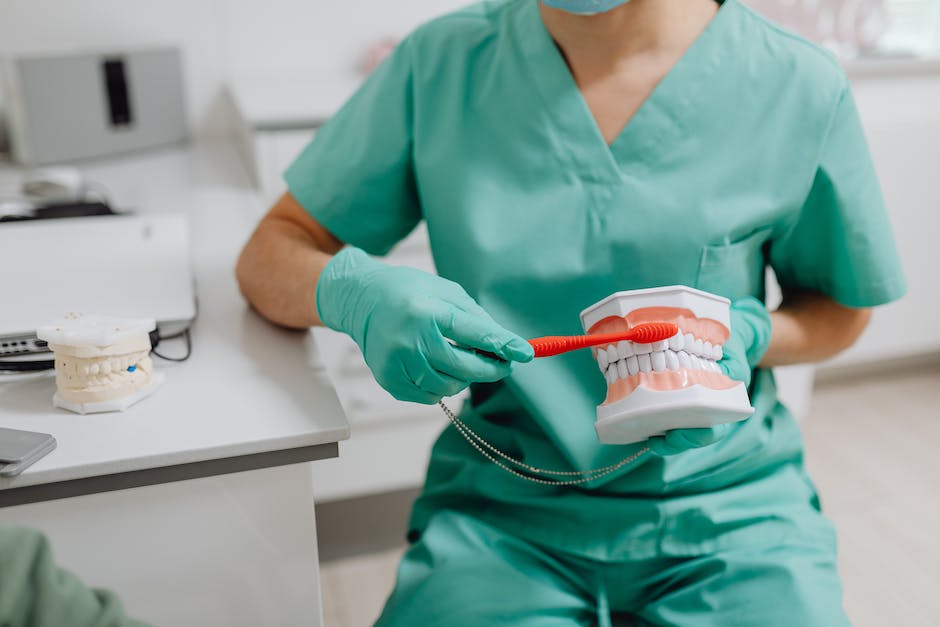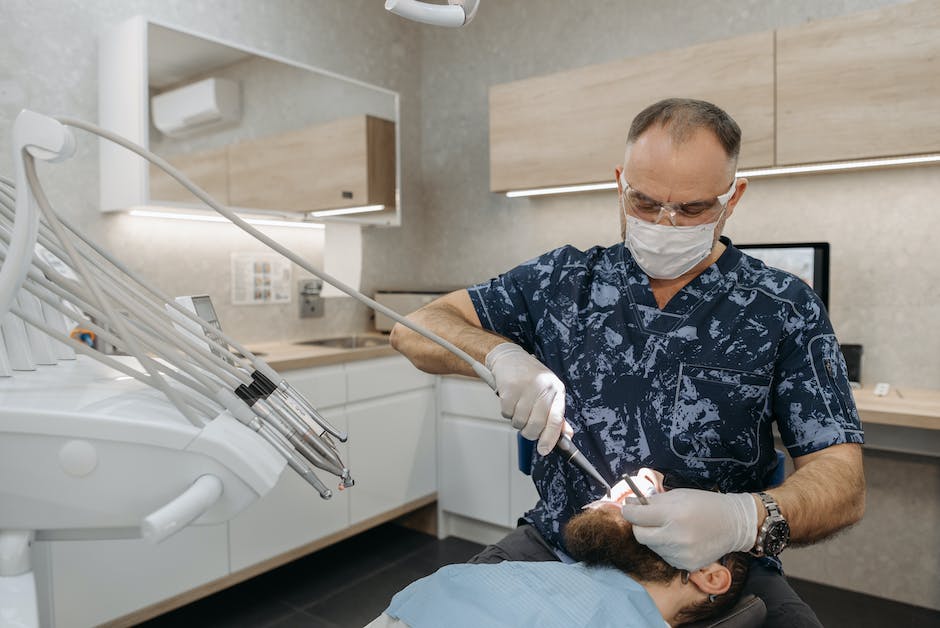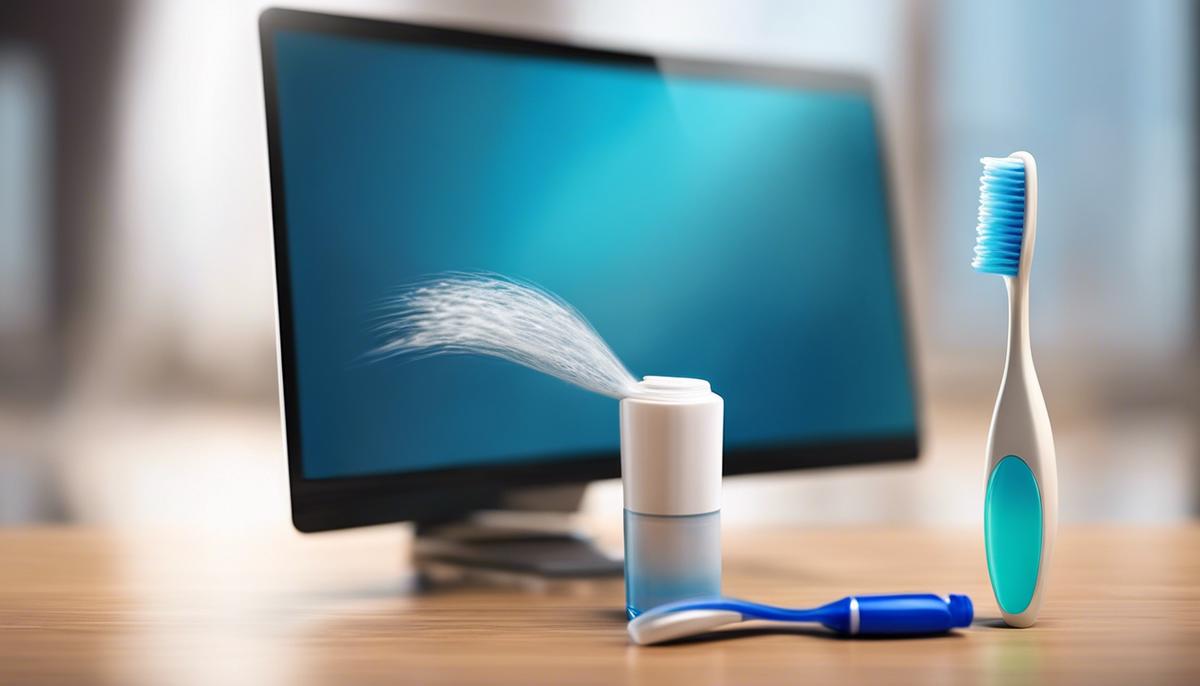Maintaining a vibrant smile and ensuring the health of our teeth and gums is more than just aesthetics; it’s a vital aspect of our overall well-being. It begins with mastering the essentials of at-home dental care through daily brushing and flossing that utilize the right techniques to keep plaque and food debris at bay. Moreover, comprehending the significance of fluoride toothpaste in our regimen is fundamental in fortifying our teeth against decay. Similarly, our commitment to oral health extends beyond our bathroom mirrors, requiring us to partake in regular dental checkups. These appointments are not just routine engagements but are proactive measures to intercept dental issues before they escalate. Furthermore, an exploration into the symbiotic relationship between our diets and oral health unveils the profound impact that our nutritional choices have. The conscious decision to limit sugar intake and to indulge in a balanced diet does more than benefit our waistlines—it’s a cornerstone in the prevention of cavities and the promotion of robust dental health. The journey to excellent oral health is a multifaceted one, and through this essay, we aim to navigate its intricacies and empower ourselves with the knowledge to maintain a healthy smile.
Daily Brushing and Flossing
The Critical Role of Daily Brushing and Flossing in the Prevention of Oral Diseases
Oral hygiene has long been a cornerstone of preventive dentistry—a field dedicated to thwarting the onset of various oral pathologies. A dentist removing dental plaque by daily brushing and flossing forms the basis upon which the health of the oral cavity is maintained. The significance of this facile, albeit rigorous, regimen cannot be overstated in its efficacy in impeding the progression of oral diseases such as caries, gingivitis, and periodontitis.
Brushing: The Manual Excavation of Plaque Accumulations
Tooth brushing is the primary modality implemented for the disruption and elimination of plaque—a biofilm replete with microorganisms—that adheres to dental surfaces. Employing a toothbrush with bristles of appropriate softness, one must aim to brush all accessible dental surfaces in a systematic, thorough manner. The incorporation of fluoride toothpaste facilitates the remineralization of enamel and boosts the anti-cariogenic action of the brushing process.
The adoption of a proper technique—placing the brush at a 45-degree angle to the gums and applying gentle circular motions—is crucial for optimizing plaque removal and minimizing gingival trauma. Each session should span approximately two minutes, ensuring comprehensive coverage. This twice-daily practice serves to disrupt the microbial milieu that, if left unchecked, could ferment dietary sugars, producing acids that demineralize dental hard tissues, ultimately precipitating tooth decay (dental caries).
Flossing: The Interdental Crusade Against Microbial Colonization
While brushing efficaciously cleans the buccal, lingual, and occlusal surfaces, it is largely ineffectual in decontaminating the proximal regions that are nestled between teeth. Flossing complements brushing by excavating food particles and plaque that lodge in these interdental spaces, areas commonly susceptible to the onset of decay and periodontal afflictions.
For optimal results, one should employ a length of dental floss approximately 18 inches, winding the majority of it around the proximal phalanges of two opposing digits, leaving an inch or two to work with. Introducing the floss with a gentle sawing motion into the interdental space allows one to conform the floss around the lateral aspect of each tooth in a ‘C’ shape. By articulating the floss with up-and-down motions against the tooth surface, one effectively extricates the plaque and mitigates the risk of interdental caries.
The Synergy of Brushing and Flossing: A Prophylactic Alliance
The combined forces of brushing and flossing operate in concert to decimate microbial colonies and destabilize their reinstitution on dental surfaces. This daily practice is essential to maintaining a less hospitable environment for pathogenic bacterial action, thereby preventing gingivitis—a reversible inflammation of the gingiva caused by plaque accumulation. As gingivitis is the antecedent to periodontitis, a more pervasive and irreversible condition characterized by the loss of connective tissue and bone support, its prevention is paramount.
Conclusion
The meticulous practice of daily brushing and flossing is an indispensable ritual in the pantheon of oral health care. Rigor and discipline in these activities effectively preserve the integrity of the oral cavity by precluding the genesis and progression of diseases that would compromise dental and periodontal structures. Through such preventive measures, the burden of oral diseases is significantly mitigated, bolstering the overall well-being of individuals and contributing to the longevity of the dentition.
Thus, embracing these simple yet profound oral hygiene interventions is not just an act of self-care—it is an act of self-preservation.

Regular Dental Checkups
Why are regular dental checkups essential for maintaining oral health?
It is a well-recognized fact within the scientific community that the meticulous daily regimen of brushing and flossing, while critical, is not the panacea for oral health. Regular dental checkups stand as the irreplaceable cornerstone in the preventative canon of dental medicine, functioning as an essential supplement to home hygiene practices.
The foundation of regular dental checkups rests upon the principle of early detection and timely intervention. Dental professionals are trained to identify the earliest signs of caries (dental cavities) development, a major issue that brushing and flossing alone cannot diagnose. Through the use of diagnostic radiographs (X-rays), oral examination, and other diagnostic tools, professionals can detect caries in their incipient stages, well before they become visible to the naked eye or produce any symptoms. This early intervention allows for less invasive and more preservation-focused treatment options.
Moreover, professional cleanings form a critical component of the checkup. Despite admirable home care, some areas in the oral cavity are particularly susceptible to persistent plaque accumulation and subsequent calcification into tartar. This hard, calcified deposit cannot be removed by brushing and flossing alone and necessitates professional scaling instruments for its removal. The removal of plaque and tartar is essential, as they harbor bacteria that can lead to the inflammation and infection of the gingival tissues, which can progress into more advanced periodontal diseases if left unaddressed.
The assessment of other tissues in the oral cavity is also paramount. A comprehensive oral examination includes screening for oral cancer and other systemic diseases that manifest orally. Early discovery of such conditions drastically increases the chances for successful treatment, reinforcing the vital role these checkups play in not only oral health but in general well-being.
Furthermore, regular dental checkups allow for the ongoing assessment of existing dental restorations. Fillings, crowns, bridges, and implants require monitoring and potential maintenance to ensure that they continue to function effectively and do not develop secondary caries or structural problems that could compromise oral health.
Lastly, these visits provide an opportunity for patient education. Dental professionals impart tailored advice concerning diet, tobacco cessation, and appropriate oral hygiene techniques specific to the patient’s needs. This discourse serves to enhance the patient’s home care routines and amplifies their understanding and motivation towards maintaining oral hygiene.
In summation, while the importance of optimal brushing and flossing cannot be understated, it should be recognized that regular dental checkups are indispensable to comprehensive oral health. These sessions are cardinal as they support the proactivity and early detection that are the hallmarks of modern preventative dentistry. It remains clear that the partnership between diligent self-care and professional oversight is integral for the maintenance of oral health, interweaving into a fabric that protects against the multifaceted threats of dental pathology.

Balanced Diet and Limiting Sugars
The nexus between dietary habits and oral health remains an imperative yet often underappreciated aspect of dental medicine. Oral health extends beyond the mechanical removal of plaque and is significantly influenced by the nutritional composition of one’s diet. The relationship between nutrients and oral tissues is both systemic and localized, affecting the integrity of enamel, the pathogenesis of caries, and the state of periodontal tissues.
Frequent consumption of sugars, specifically sucrose, is the most critical dietary factor in the etiology of dental caries. Carbohydrates that linger on the tooth surface are fermented by oral microbes, producing acids that demineralize enamel and dentin over time. This process, referred to as an “acid attack,” can lead to the progression of caries if the demineralization surpasses saliva’s natural remineralization capacity.
To mitigate such risks, it is prudent to curtail the intake of foods with high sugar content, particularly sticky candies and confections that adhere to teeth surfaces, as well as sugary beverages which bathe the teeth in sugar with each sip. The frequency of these exposures is as significant as the quantity; thus, minimizing snacking between meals is advised to allow saliva to neutralize the oral pH and promote enamel remineralization.
Furthermore, acidic foods and drinks, including citrus fruits, tomatoes, and carbonated beverages, can exacerbate enamel erosion. While they are integral to a balanced diet, their consumption should be moderated, and it is advisable to rinse the oral cavity with water following their ingestion to hasten the normalization of the intraoral pH.
A diet lacking in key nutrients can impair the immune system, increasing susceptibility to periodontal diseases. Adequate intake of vitamins A, C, and E, alongside elements like calcium and phosphorus, is vital for maintaining the fortification of periodontal structures and the prevention of gingival bleeding, a symptom of vitamin C deficiency known as scurvy.
To preserve oral health, it is recommended to integrate a balanced diet rich in fiber, dairy, lean proteins, and a variety of fruits and vegetables while minimizing the intake of simple sugars and acidic foodstuffs. Such dietary habits, paired with consistent oral hygiene practices, including brushing, flossing, and routine professional evaluations, constitute the bedrock of oral disease prevention.
In conclusion, the confluence of diet and oral health cannot be overstated. Discretion in the consumption of potentially harmful foods is not only a recommendation but a responsibility for those seeking to maintain oral well-being. Thus, informed choices regarding diet, undergirded by rigorous hygiene routines, stand as the bulwark against oral diseases and the foundation of dental health.

Embracing these oral health strategies creates a foundation for a lifetime of healthy teeth and gums. Engaging in proper brushing and flossing, attending regular dental visits, and curating a diet beneficial to oral health are not merely recommendations but are integral to our daily routines. These practices help stave off dental diseases and ensure that our smiles remain not just a reflection of our oral hygiene but an indicator of our overall health. Armed with the right information and a diligent approach to dental care, we stand equipped to face the challenges that threaten our oral wholeness with confidence and steadfast resolve. Let us carry forward the knowledge gleaned to transform our oral care habits and influence others in our community to prioritize their dental health as well.








